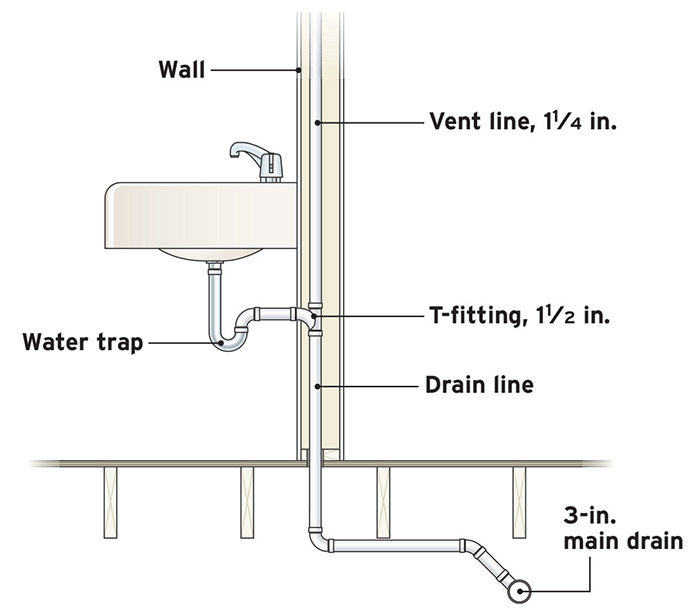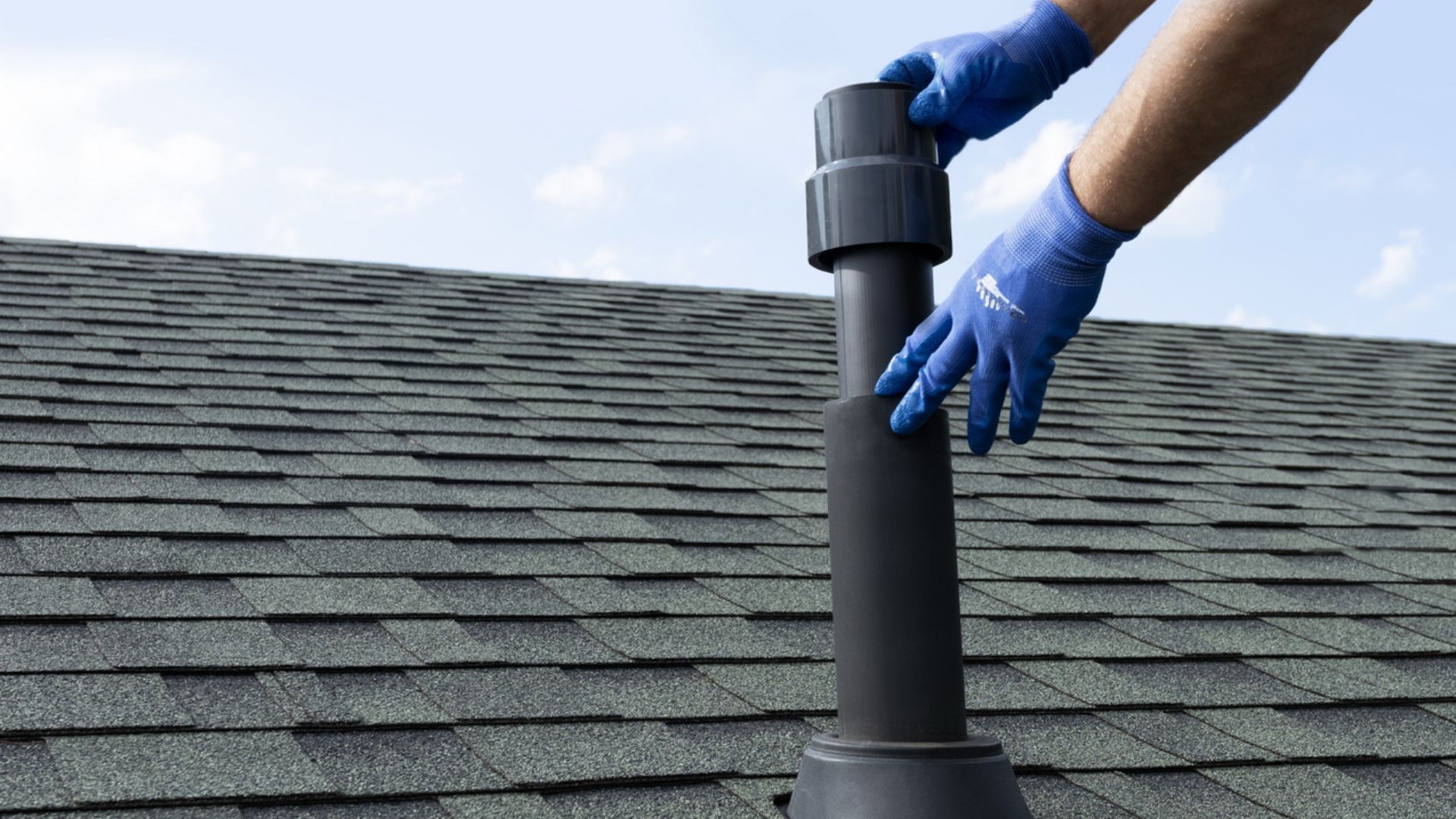Presented here on the next paragraphs you'll find a lot of sensible tips with regards to What Are Plumbing Vents and Why Are They Important?.

Correct air flow in plumbing systems is usually forgotten, yet it is critical for keeping the capability and safety of your home's plumbing. Air flow aids regulate atmospheric pressure, stop the build-up of damaging gases, and make sure the reliable elimination of waste. In this guide, we will check out the significance of correct pipes air flow, exactly how it works, and the benefits it offers your plumbing system.
Understanding Air Flow in Plumbing
Ventilation in pipes refers to the network of pipes that permit air to move via the drain system. These vents offer several objectives, including managing atmospheric pressure within the pipelines, stopping drain gases from entering the home, and helping in the smooth flow of wastewater.
Exactly How Ventilation Works in Pipes Solutions
Air Pressure Policy
Appropriate ventilation preserves well balanced atmospheric pressure within the plumbing system. When water moves through pipelines, it displaces air. Without ample ventilation, this displacement can produce negative stress, causing reduce drains or siphoning of water from traps, which can create undesirable odors to leak into the home.
Avoiding Sewer Gas Buildup
Among the most essential functions of plumbing vents is to prevent sewage system gases, such as methane and hydrogen sulfide, from gathering within the home. These gases can pose significant wellness risks and are very combustible. Vent pipes enable these gases to leave securely outside.
Helping in Waste Elimination
Ventilation aids in the efficient elimination of wastewater by protecting against airlocks in the drain system. When air can flow freely via the vents, it enables water and waste to flow smoothly with the pipes, minimizing the danger of blockages and backups.
Types of Pipes Vents
Key Heap Vent
The primary pile vent, also known as the air vent stack, is the primary vent in a pipes system. It expands from the primary drain line up with the roof, allowing gases to get away and fresh air to get in the system.
Branch Vent
Branch vents link to the primary stack vent and serve individual components, such as sinks, toilets, and showers. These vents guarantee that each component has adequate ventilation to function properly.
Air Admission Valve (AAV).
An Air Admittance Valve (AAV) is a one-way valve that enables air to go into the plumbing system without the need for a standard air vent pipeline prolonging through the roofing. AAVs are typically made use of in remodellings or locations where mounting a conventional vent is not practical.
Indicators of Poor Ventilation in Pipes.
Slow Draining Fixtures.
If your sinks, tubs, or bathrooms are draining gradually, it could be an indication of poor air flow. Poor air flow can develop a vacuum cleaner effect, making it difficult for water to drain pipes appropriately.
Gurgling Appears.
Gurgling noises coming from drains are usually an outcome of air being sucked through water catches as a result of negative pressure in the pipelines. This is a clear sign of not enough ventilation.
Unpleasant Odors.
Sewer smells inside your home are a warning that your plumbing system is not appropriately ventilated. This might suggest that sewer gases are not being appropriately aired vent outside, leading to potentially hazardous problems.
Common Air Flow Blunders.
Poor Vent Sizing.
Utilizing undersized vent pipelines can cause inadequate air flow and stress discrepancies in the system. It's important to use vents that meet the particular requirements of your pipes system.
Improper Vent Placement.
Placing vents as well much from the fixtures they offer can reduce their effectiveness. Proper placement ensures that air can flow easily and successfully with the system.
Ignoring Code Demands.
Building regulations supply certain guidelines for pipes air flow. Ignoring these codes can lead to a system that fails to operate correctly and might bring about expensive repair services or carcinogen.
Benefits of Correct Ventilation.
Boosted System Effectiveness.
Properly aerated pipes systems operate extra effectively, with less blockages, faster draining pipes, and much less pressure on the pipes. This effectiveness expands the life-span of the plumbing system.
Improved Air Quality.
By stopping drain gases from entering your home, appropriate air flow contributes to far better interior air quality, making your living atmosphere healthier and more comfy.
Avoiding Water Damages.
Sufficient ventilation assists prevent water from being siphoned out of catches, which can result in sewage system gases entering the home and creating water damages with time.
Steps to Make Sure Appropriate Ventilation.
Consulting Plumbing Codes.
Always speak with regional plumbing codes when designing or changing your pipes system. These codes give the essential guidelines for correct venting and ensure your system meets security requirements.
Normal Evaluation and Maintenance.
Routine examinations can assist determine prospective air flow concerns before they end up being significant problems. Upkeep jobs, such as cleansing vent pipes and looking for clogs, are necessary for keeping the system in good working order.
Specialist Installation.
For brand-new installments or major alterations, it's important to hire a specialist plumbing professional. They have the knowledge to ensure the ventilation system is properly designed and mounted according to code.
Conclusion.
Appropriate air flow is a crucial component of any type of plumbing system, making certain that it operates effectively and securely. By understanding the value of air flow, acknowledging the indicators of bad ventilation, and taking steps to preserve your system, you can avoid costly problems and secure your home's air top quality.
What is a Plumbing Vent and it's used for?All plumbing systems in residential and commercials construction have a plumbing vent. It doesn’t just vent unwanted odors from the drainage system to the outside; it actually serves an important purpose by supplying air to the system.
The plumbing drainage system is actually called a drainage, waste and vent (DWV) system. When water flows down the piping, an air supply (vent) is needed to allow the water to flow. Think of the vertical pipe as a drinking straw. If you plug the top end of a straw, liquid won’t drain from it.
The DWV system in your building consists of a series of pipes connected to each fixture; they extend above each fixture, and the system terminates at an open pipe that extends through the roof. This piping allows air into the system and prevents unbalanced pressures in the piping.
?The vent also prevents the system from drawing water out of a trap at the fixture with the characteristic “glug-glug-glug” as the drain gasps for air. Plumbing traps should drain smoothly and never “glug” or gasp for air.
If you have a drain that empties slowly or gurgles as it drains, this may indicate a venting problem. If you flush a toilet and the sink gurgles, there’s definitely a vent problem. It is good idea to have a Plumber check this.
https://www.ameliashomeinspection.com/blog/what-is-a-plumbing-vent-and-its-used-for

Hopefully you liked our section on . Thanks a ton for taking time to browse our piece. Feel free to take a moment to distribute this post if you enjoyed it. Thank you for taking the time to read it.
Click Here
Comments on “The Purpose of Correct Ventilation in Supporting Plumbing Systems”